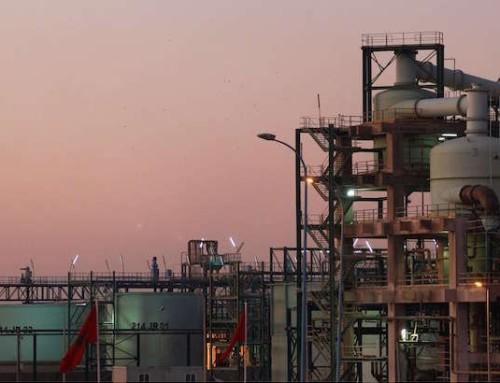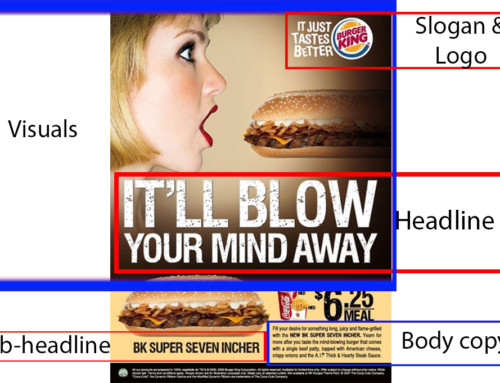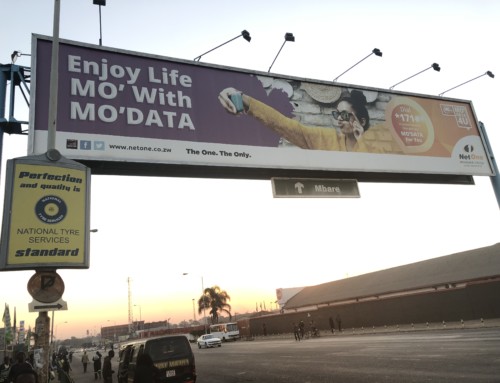Hey guys! I hope you captured some good insights in the last series that just ended. We ended the series with a discussion on the Marketing Information System and demonstrated that the best information will make you perform better in business. Starting this week we will be looking at some pointers on how Zimbabwean companies should use Strategic Plans. Many a time the use of this document is mainly of a ceremonial nature. Companies just have the document because at business school the manager was told that you should have a strategic plan in your business. If you analyse the way that some companies operate you will notice that it will not be related in any way to what will be written in the strategic plan. One might think that they are being clever but you will only be doing yourself a disservice and the consequences are always reflected in your bottom line. So, let us see some of the uses to which you can put a strategic plan and the advantages that you will accrue by using a strategic plan in such ways. We will start with the mission statement.
That boss is like many bosses. To them things like the mission statement are created to perform a ceremonial role, and then it is (directionless) business as usual. (Dilbert)
So, I was on Art Holding’s website, stalking as usual. I wanted to see what their mission statement is like. I remember ART Holdings because my father used to work there. He drove the Nissan Sunny 1.5 LX when he worked there, we had good times in that car. Below you will find the mission statement that I plucked from their website:
That is ART Holdings’s Mission. Let us see if things should be the way that they are on that screen shot.
A mission statement is a written declaration of an organisation’s core purpose and focus that normally remains unchanged over time. Properly crafted mission statements (1) serve as filters to separate what is important and what is not, (2) clearly state which markets will be served and how, and (3) communicate a sense of intended direction to the entire organisation.
A mission is different from a vision in that the former is the cause and the latter is the effect; a mission is something to be accomplished whereas a vision is something to be pursued for that accomplishment (Business Dictionary).
So, according to our definition is ART Holdings playing by the rules? Let us see, their mission statement is as follows:
‘To manufacture and distribute goods and services of international standards that enhance and enrich the lives of people everywhere’
Now, analysing it against the 3 parameters that are in the definition above:
(1) ‘goods and services of international standards’ is a filter. That means that they do not want to create poor products – [acceptable]
(2) ‘enrich the lives of people everywhere’. They are implying that they can even serve markets in Fiji. Do you think that they are capable of doing so at the moment? I do not think so – [needs to be edited]
(3) They communicated the intended direction which is fine. The intended direction is the issue though, the ‘everywhere’ part is something I strongly feel that they cannot fulfill at the moment – [needs to be edited]
As you can see we have a bit of a problem here. This is a symptom that points to larger problems that may lie within ART Holdings. If we are to borrow a little from their vision you would see just what I mean. The vision says ‘To be a blue chip conglomerate commanding regional presence and market leadership’. According to their annual report for 2015 they made a profit before tax of US$150 000. In my opinion these figures do not justify them having such a vision yet i.e. market leadership in the region. The effect could be that an employee who knows that they are still too far off from realising this vision might get demotivated after reading that as they will feel that they are fighting a losing battle. What does this say about the managers in ART? If the marketing people cannot pick that the mission statement is not entirely applicable to the organisation then what does this say about their ability? Is this also not affecting ART in other areas as this level of ability affects marketing campaigns, marketing strategies etc? This actually means a lot when you look at it from that angle. Although you can omit some of the items in the list below a comprehensive mission statement can also contain the following elements:
a) A clear picture of the industries that a firm would compete in e.g. industrial or consumer markets
b) The types of products or services that a company will provide e.g. clothing, telecommunications
c) The segments of a market that a company will operate in e.g. upmarket, mass market
d) The mission statement will state the scope of operations and how wide or deep they will run into the overall value chain e.g. if it will also be involved in the creation of the raw materials that are needed in the production of the goods that it provides or not
e) The locations in which the company will operate e.g. in a city, a country, or globally
f) The competence level that a company has in various spheres e.g. technology – ‘we have cutting edge this and that’
Let us take a look at GAP’s mission statement. GAP is a clothing company:
‘We create emotional connections with customers across the world through inspiring product design, unique store experiences, and compelling marketing’
Again let us analyse this mission statement using our definition from earlier on:
(1) ‘We create emotional connections with customers’ – This is what is important to them and it clearly shows the aim of their strategy – [acceptable]
(2) ‘across the world’ – This clearly states the market that they are chasing. The ‘how’ part is also taken care of in the phrase that we quoted in (1) – [acceptable]
(3) The direction is to achieve the objectives through ‘inspiring product design, unique store experiences, and compelling marketing’ – [acceptable]
Crystal clear right?
This is how Zimbabwean companies should use a mission statement. It should be a statement of intent that someone who is not interested in the company’s operations should understand fully such that when they are asked what the company does they will be able to answer like they own the company.
When you use the mission statement in the way that it should be used you will get the following benefits:
a) Direction – A mission statement acts like a compass which tells you where to go. Imagine a ship operating without a compass. You might set out to go to India and then you end up in Tahiti. Imagine the amount of resources that you will have wasted and the amount of demotivation that will be in your camp when your team realises that you have failed. Thus a mission statement will ensure that your strategic plan will not lead you astray wasting resources in the process.
b) Conflict resolution – Have you noticed how people abide by something that is written down as opposed to what is said. For example in most religious arguments people refer to a Bible, or the Koran etc. depending on the church. Imagine one of the managers is trying to place an argument for you to go into a business that you think is not aligned to what you are doing. Simply refer them to the mission statement in the strategic plan and that will be the end of that discussion.
c) Motivation – When the stakeholders know the purpose of you all coming together in the form of an organisation the clarity that is provided by a mission statement will ensure that they are not confused about their work. Every member knows why they are a part of the organisation and this serves to motivate everyone as you will be working as a team towards a common goal. You will know the values that you should abide by and these will help to bind you together. As a consequence productivity and profits will rise.
d) Advertising – A well written mission statement with the right elements can be used in advertising to a very good effect. An advertisement that is based on a mission statement is usually more credible as people might already be familiar with the mission statement as they see it when they visit the business’s premises.
Are you getting these sort of benefits from your mission statement? Apart from the one on advertising you should be getting all of these benefits. If not then you are missing out and you should take the time to reflect on this. Trust me these types of benefits will contribute to your bottom line greatly. From the benefits that I am have listed above you will not waste resources, you will have less conflict in your organisation, your employees will be motivated and the customers will believe in your advertisements more leading to higher conversion rates. Sounds like a recipe for success right?
This is how you should be using a mission statement. Do not take it for granted as it will affect your operations in one way or the other. Is your mission statement on point? Take a look at it and let us know.
Thanks
Ruvimbo
[/fusion_builder_column][/fusion_builder_row][/fusion_builder_container]







Thanks for the challenge Ruvimbo. Carbon Investments’s slug line is ‘Creating lasting relationships.’ These 3 words summarise our mission. Which is to ensure our brand positioning with Africa’s emergent middle class & upwards. It is a reference point that makes us stand apart from our competitors through our customer-centred approach (the how). Which gives us a competitive advantage. This simplifies our strategic direction. It also communicates our company identity to all those stakeholders we want to create relationships with (market {existing and potential}, employees, suppliers & community at large)
You are welcome Taurai. I like your slug line. When you create lasting relationships with customers you benefit from having more profitable clients as it costs less to advertise to the same customer than to acquire new customers. You also get to benefit from the fact that those customers are less price sensitive and this will allow you to charge prices that are closer (after negotiation) to the initial prices that you intended to charge. When a customer is loyal to you you can be the beneficiary of free word of mouth advertising which will be very profitable for you. So keep at it and you will definitely attain your goals.
Well said Ruvimbo. The tragedy is most local firms have adopted this ‘survival mode’ which to them seem to mean throwing away critical business principles (especially Marketing related ones). The challenge is to illuminate the connection between these business principles and tangible shareholder wealth.
Thank you Simba and thanks for reading. Very true marketing is actually seen as an expense and is seen to be less important than other business functions. What most firms overlook is the fact that customers drive a business and it is marketing that brings in those customers.
‘The challenge is to illuminate the connection between these business principles and tangible shareholder wealth.’ – That is very true you can actually say that as professionals we are partly at fault for not showing (and proving beyond reasonable doubt) the value that we can bring to organisations in terms of dollars. I am of the idea that it is up to the marketers and other business professionals in this country to prove to the various stakeholders that there is indeed a connection between business principles and the bottom line. This is something that I am passionate about and I will not rest until marketing and other business disciplines are given their rightful position in local firms.